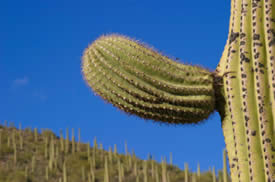TestimonialsSexual Techniques 11I have been in Germany, Holland, Norway, Romania, Luxemburg, Italy and Iran. » read more | 5718 reads Making Money 3I speak Farsi, English and Russian fluently and a little bit of Persian.
» read more | 4687 reads How to Meet Women 9I was raised in a small town where everyone knew me and I knew everyone else. » read more | 4289 reads How to Meet Women 3I am a world traveler that ended up in Canada because I have family here.
» read more | 4769 reads Making money 1I needed some extra money because of my family in El Salvador that I need to support. » read more | 5239 reads |
The Tree of Life
The Tree of Life is found throughout mythology and religion; one of the oldest versions is the Tree of the Knowledge of Good and Evil in the Bible. Yggdrasil, the tree that separated the heavens and the earth in Norse mythology, is another mythological tree associated with the Tree of Life; in Assyria, the Tree was associated with a network of criss-crossing lines that have more to do with sacred geometry than one would think. And in China, the Tree was the resting place of a bird in the tree, and a dragon coiled around the root, in which the dragon represented immortality. This image, with the dragon coiled at the bottom, is a very common way of thinking of the Tree. That makes some things in Kundalini yoga very interesting indeed. Most researchers into the Tree of Life draw a close parallel between the trunk of the tree and the penis, for obvious structural reasons. In Kundalini yoga, which is the core of any system using the chakras or tantric sex, the penis is the location of one chakra, and the penile root is the location of the root chakra. Below the root, coiled around the base of the spine in three-and-a-half revolutions, is the Kundalini, a snakelike source of energy that when uncoiled extends through all seven chakras and helps the human communicate with the godhead. The fascinating thing about the Tree of Life is that it is found in almost every single mythology, from that of the Judeo-Christian and Islamic traditions to those of the Australian aborigine. In Kabbalah, it is used to explain and enlighten on ten different parts of that mystical tradition, and to explain how raw energy can be channeled through a tree structure to transform it into useful energy. It is found in Shintoism, and in the Mayans of the Yucatan Peninsula in Mexico. Even in the beliefs of science, the Tree of Life is found when Darwin describes the relationship between all beings on Earth. Clearly, the seeker after truth might be well-rewarded in examining truths surrounding the Tree of Life. What do the fruit, the leaves, and the root of the tree mean, to you especially? What is it rooted in, and what does it have to do with the phallus? Is there also a springwater of knowledge at its base, as there is in Norse mythology? And where is the serpent of the tree and what does he represent? There is no fixed answer to any of these questions. Instead, the seeker of truth must meditate and consider these answers in relation to himself or herself, and in the context of his or her own sex life. After all, the Tree and the penis are much the same, metaphorically speaking. When you seek this answer for yourself, don’t just use your own brain, or just one book. The Tree of Life is one of the most widely-found symbols in worldwide mythology, second only to the flood motif. Don’t ignore the tree of any culture, from folk and fairy tale to mythology to holy texts to modern and Victorian literature. The Tree is not a fixed and dry religious symbol. Instead, it is a living symbol, and its underlying truths should e sought in multiple places. And the simple answers should be discarded. The Tree is big enough to hold the meaning you are seeking. Never stop asking what you can find among its branches and roots, or above them. » 4245 reads |
Live ChatUser loginMessage CenterNavigation
all-time popular content
|

